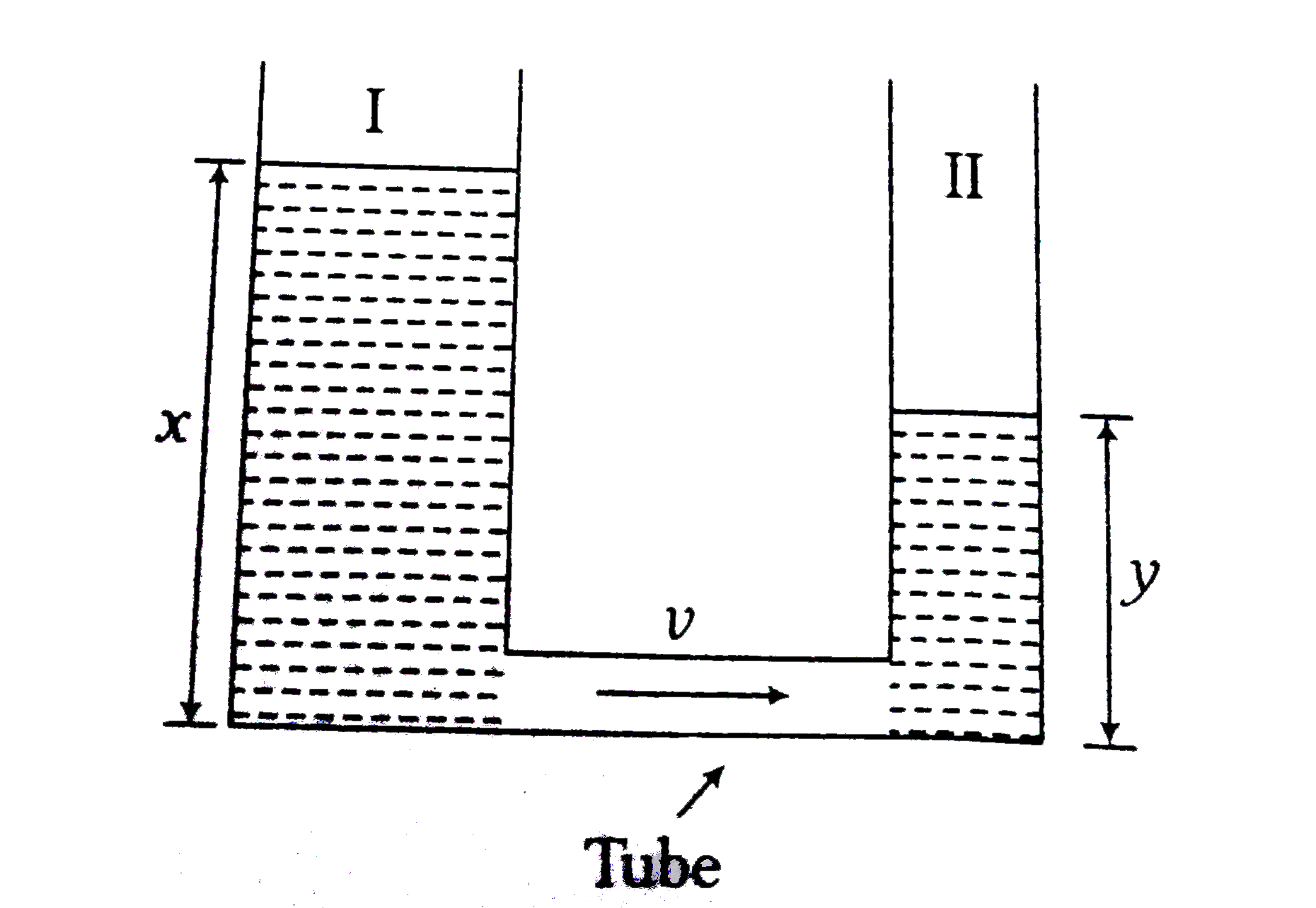A composite tube is made by strinking a thin steel tube on a nras tube. If AS and AB are the respective sectional areas of the steel and brass tubes and YS and YB their Young's moduli, then find the Young's modulus of single tube of the same length and total sectional area, which would be have in the same facition as that of the composite tube.
Method1: Let the composite tube be subjected to an axial (tensile) force F and δl be the corresponding elongation.
As discussed in theory, the stress borne by steel tube
ρsteel=FYSASYS+ABYB
But we know YS=σSεS=σSδl/L
δl=σsLYS=FL(ASYS+ABYB).........iii
If Y be the required young's modulus of the tube which behaves in the same fashion as that of the composite tube, then, corresponding to the same external force F, the deflection δl should be the same i.e,
δl=3L(AS+AB)Y ..........iv
comparing eqn iii and iv
we have
Y=ASYS+ABYBAS+AB
Method 2:

As discussed in the theory section, we can compare composite rod system with spring combination. We can write equivalent force contact of spring is
keq=1L(ASYS+ABYB) ........v
If replace the composite rods into a single rod of length L and area (AS+SB)
Here keq=(AS+A+B)YL......vi
Comparing eqn v and vi we ave equivalent Young's modulus as
Y=ASYS+ABYB(AS+AB)
Topper's Solved these Questions
- PROPERTIES OF SOLIDS AND FLUIDSBOOK - CENGAGE PHYSICSCHAPTER - PROPERTIES OF SOLIDS AND FLUIDSEXERCISE - Solved Examples
11 Videos
- PROPERTIES OF SOLIDS AND FLUIDSBOOK - CENGAGE PHYSICSCHAPTER - PROPERTIES OF SOLIDS AND FLUIDSEXERCISE - Exercise 5.1
12 Videos
- NEWTON'S LAWS OF MOTION 2BOOK - CENGAGE PHYSICSCHAPTER - NEWTON'S LAWS OF MOTION 2EXERCISE - Integer type
1 Video
- RIGID BODY DYNAMICS 1BOOK - CENGAGE PHYSICSCHAPTER - RIGID BODY DYNAMICS 1EXERCISE - Integer
11 Videos
Similar Questions
Two vertical rods of equal lengths, one of steel and the other of copper, are suspended from the ceiling at a distance l apart and are connected rigidly to a rigid horizontal bar at their lower ends. If AS and AC be their respective cross-sectional areas, and YS and YC,their respective Young's moduli of elasticities, where should a vertical force F be applied to the horizontal bar in order that the bar remains horizontal?

View SolutionThe water flowing through the same tube having two different cross section areas has different flow rates .
View Solution
Knowledge Check
Rigidity modulus of steel is η and its Young's modulus is Y. A piece of steel of cross sectional area A is chaged into a wire of length L and area A10 then :
AY increases and η decreasesBY and η remain the sameCboth Y and η increaseDboty Y and η decreaseIf L is the capillary rise or dip and A the cross sectional area of the tube, other condition being the same, then
ALA= constantBL√A= constantCLA= constantDL√A= constantTwo wires A and B have the same length and area of cross-section. But Young's modulus of A is two times the Young's modulus of B. Then the ratio of force constant of A to that of B is
A1B2C12D√2
The Young's modulus of steel is twice that of brass. Two wires of the same length and of the same area of cross section, one of steel and another of brass are suspended from the same roof. If we want the lower ends of the wires to be at the same level, then the weight added to the steel and brass wires must be in the ratio of
View SolutionTwo wires of different materials each of length l and cross sectional area 'A' are joined in series to form a composite wire. If their young's moduli are Y and 2Y, the total elongation produced by applying a force F to stretch the composite wire will be
View SolutionIf cross- sectional area of limb I is A1 and that of limb II is A2 then velocity of the liquid in the tube will be, (cross- sectional area of tube is very small)

View SolutionYoung's modulus of steel is Y and its rigidity modulus is η. A piece of steel of cross-sectional area A, is stretched into a wire of length L and area of cross-section A4, In wire case
View SolutionYoung's modulus for a wire of length L and area of cross-section A is Y. What will be Young's Modulus for wire of same material, but half its original length and double its area?
View Solution